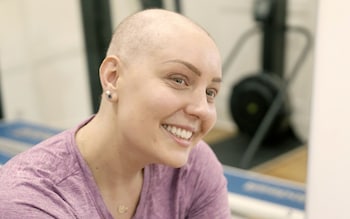There have been many stories about the price people pay for fame and the toll it takes on relationships. None may be as compelling as the lawsuit involving Michael Oher and Sean and Leigh Anne Tuohy of The Blind Side fame. It's a story about how fame changes everything and how movies can distort and do harm to the real-life people they're based on.
To understand how such a good story could turn so ugly, it's important to understand how the movie came to be. It's long been forgotten that Michael Lewis' 2006 book, The Blind Side: Evolution of a Game, was not about the Tuohys or Oher. It was about football strategy. Lewis had just come off his 2003 bestseller on the economics of baseball, Moneyball, and his latest was an attempt to do the same for America's most popular sport.
The book begins with the sack of Washington Redskins quarterback Joe Theismann by New York Giants linebackers Harry Carson and Lawrence Taylor in November 1985. Dubbed "the Hit That No One Who Saw It Can Ever Forget" by The Washington Post, it would change the way NFL management recruited linemen, starting a bidding war for athletic offensive tackles who could protect the league's most precious asset: quarterbacks. And protect them from the part of the field that quarterbacks can't see when dropping back to pass or standing in the pocket: their "blind side."
That aspect of the book didn't light up the sales registers for Lewis, so the publisher tried another angle: releasing an excerpt from the book in The New York Times Magazine featuring Oher and the Tuohys. The book was optioned and became a surprise movie blockbuster in 2009, turning Oher and the Tuohys into household names.
How did this success lead to Oher suing the Tuohys in civil court in Memphis, Tennessee, and the court of public opinion worldwide? The person with the best insight is the author himself, who knows a lot about not just the economics of sports but the economics of the movie business as well.
"It was half football strategy and half football drama and didn't sell many copies, so the idea that it would become a movie kind of surprised me," Lewis told 60 Minutes. "The movie finally gets made by a small film company called Alcon Entertainment, owned by Fred Smith, the founder of FedEx, who happened to know the story because he lived in Memphis, and he said, 'I'll make it.' He made it on a shoestring, and it made hundreds of millions of dollars."
So where did all that money go? Did Lewis and the Tuohys pocket millions at Oher's expense? "I know that not to be true because the money [the Tuohys] made off the movie was basically my money, and I just gave them half of it," Lewis explained. "In the beginning, I sold the movie rights for $250,000s, which we split—$125,000 and $125,000—and the Tuohys divided it up five ways with their kids, which is a fifth of $125,000, and that's before agent fees and taxes."
Which would have made Oher's cut about $14,000. Lewis then explained that future royalties for each side amounted to $760,000. After taxes and agent fees, that ended up being $400,000 for the Tuohys—again divided by five. Which was an additional $80,000 for Oher.
What was Lewis' reaction when he first heard about the lawsuit? "I was a little shocked [Oher] was suspicious of them. I watched this relationship for the better part of three years, and it was loving and he was like a part of the family. And to the extent they had any kind of motive other than to take care of this kid, they were probably pleased he played at their alma mater, Ole Miss. But that was it."
Lewis finished up with a broader view of the conflict. "The Tuohys themselves have made hundreds of millions of dollars in the fast-food business. Michael Oher has made $35 million as a football player. It's so sad to see something that, because of its success, caused problems. The success, and the perception that there was this big pot of money, created this division."
One thing is certain: Oher had a successful career in the NFL, and the Tuohy family played a part in that success. That's not my opinion. In his 2011 autobiography, I Beat the Odds: From Homelessness to the Blind Side and Beyond, a bestseller for seven weeks, Oher dedicated the book to the family he's now suing: "To the Tuohy family, you are truly a blessing to me. Thank you for helping me to turn my dreams into reality."
So what changed? The economics of the movie business may have fueled Oher's lawsuit. It's hard for ordinary citizens to comprehend how a blockbuster could leave such a small percentage to the writer or a book's subjects. That is unless you've spent some time in the byzantine world of Hollywood finance and accounting.
Oher's more profound grievance was with the movie itself and the depiction of him as a silent, helpless, stupid young man. One scene embodies that caricature, the one where a 10-year-old Sean Tuohy Jr. moves condiment bottles around the kitchen table to teach Oher positions in football. That scene, needless to say, was not in Lewis' book.
Oher told the Times Magazine this past Sunday that he did not see the movie until the Baltimore Ravens team chaplain persuaded him to. "It's hard to describe my reaction," Oher said. "It seemed kind of funny to me, to tell you the truth, like it was a comedy about someone else. It didn't register. But social media was just starting to grow, and I started seeing stuff that I'm dumb. I'm stupid."
In his 2003 book, When Your Back's Against the Wall: Fame, Football, and Lessons Learned Through a Lifetime of Adversity, Oher wrote about the pain and hurt the movie had caused him. "After the movie came out, the narrative downplayed some of the qualities that make me who I am. That I am self-taught. That I'm intuitive. That I work for things. The fictional story swept all of that away. For the sake of a better story, the movie suggested that some of the character traits that most define me are not true," he wrote.
In the same book, Oher admitted to having struggled in the past few years with obesity and issues relating to concussions from his years playing football. "I found myself in hard times again," he wrote. "The struggles I've faced these last few years—job loss and battles with mental health—haven't really been shared with the public."
Who knows what really happened to precipitate Oher's attacks against the Tuohys, who've remained largely silent except for an allegation that they were threatened with extortion by the man they once considered part of their family. If there are two things that we know almost for certain, it's that the Tuohys and Lewis didn't steal anything from Oher. And that the real betrayal—one Oher may grapple with the rest of his life—were the liberties the screenwriters of The Blind Side took when portraying Oher as a simpleton.
That's a story Lewis might want to write about in his next book. On second thought, maybe not.
Disclaimer: The copyright of this article belongs to the original author. Reposting this article is solely for the purpose of information dissemination and does not constitute any investment advice. If there is any infringement, please contact us immediately. We will make corrections or deletions as necessary. Thank you.




